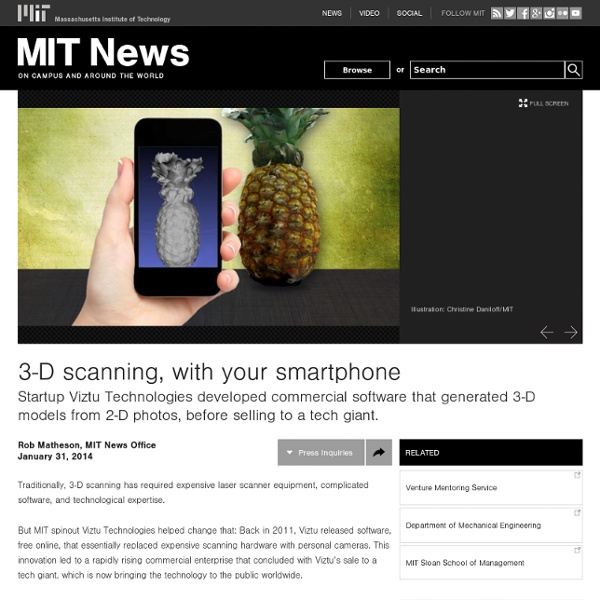3-D scanning, with your smartphone

The VR Shop - VR, AR, 3D and Video Glasses Reviews
The best virtual reality apps for iPhone, compatible with Google Cardboard
Before virtual reality headsets become mass-market products, iPhone owners can sample the futuristic technology in a cheap and easy way, thanks to Google Cardboard. AppleInsider offers a rundown of the best VR experiences available to download right now on the App Store. tl;dr: Buy a Google Cardboard v2 unit and download Vrse on the App Store. Before you get started Google Cardboard is compatible with Apple's iPhone lineup, but is best used with the larger screens of the iPhone 6 and iPhone 6 Plus. Your best bet is the I Am Cardboard Kit, available from Amazon for $24.99. For a slightly more affordable option, there's the Virtual Reality Viewer V2, also based on Google Cardboard version 2. It should be noted that Google Cardboard is not intended to be used with a head strap, because the combination of inadequate screen resolution for VR as well as lag can cause dizziness and nausea. Google Cardboard version 2 models come with a dedicated button that taps the screen on your iPhone.
Make Your Own 3D Printer Filament by Building Your Own Filament Extruder
Costs have certainly dropped over the years, but 3D printing could never be accused of being an inexpensive hobby. While the average price of a 3D printer is around one to two thousand dollars, the hidden cost of printing materials is the real area where 3D printing becomes a hobby recommended for someone with access to a significant disposable income. Typically about five pounds of PLA will cost between forty and fifty dollars, and while that sounds like a lot of material any 3D printer owner will tell you that filament goes a lot faster than you’d imagine. Once you factor in things like failed prints, misprints, the amount of supports required for your print, and infill levels those five pounds of filament can disappear in a flash. Part of the high cost of 3D printing materials is the actual cost to extrude the plastic material into the filament required for most 3D printers. The only real concern is making sure that the plastic is being exposed to the same temperature consistently.
Related:
Related:



